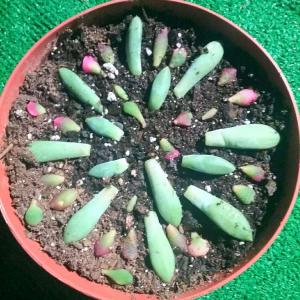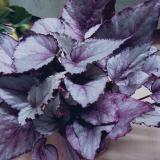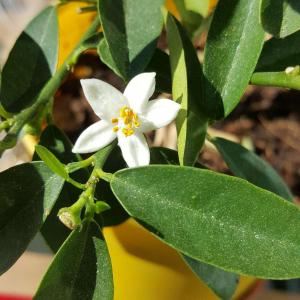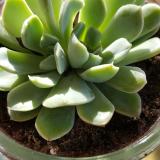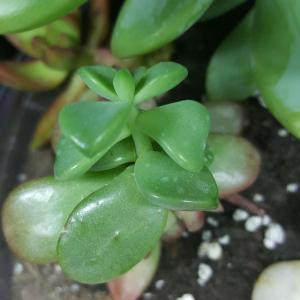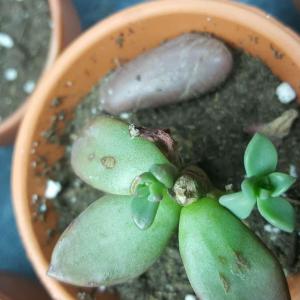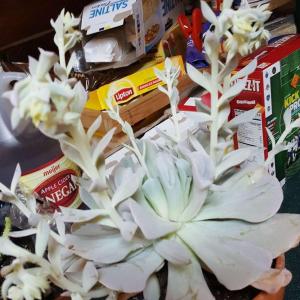文章
Dummer. ゛☀
2017年07月16日

Family - Fabaceae
Flowering - August - October.

Habitat - Fields, pastures, waste ground, disturbed sites, roadsides, railroads.

Origin - Native to Asia.
Other info. - This aggressive weed can be found throughout Missouri growing in the habitats mentioned above. Any traveler driving along a major highway or roadway can see large stands of this plant along the roadside. It was first collected wild in the state in 1938 by Steyermark. The plant was introduced as erosion control, food for cattle and wildlife, and shelter for small animals. This species is very drought resistant and thrives on neglect. Unfortunately, there is no effective control for the plant at this time.
L. cuneata is easy to ID in the field because of its sericeous stems and small white flowers, which have two purple splotches at the base of the standard.
Flowering - August - October.

Habitat - Fields, pastures, waste ground, disturbed sites, roadsides, railroads.

Origin - Native to Asia.
Other info. - This aggressive weed can be found throughout Missouri growing in the habitats mentioned above. Any traveler driving along a major highway or roadway can see large stands of this plant along the roadside. It was first collected wild in the state in 1938 by Steyermark. The plant was introduced as erosion control, food for cattle and wildlife, and shelter for small animals. This species is very drought resistant and thrives on neglect. Unfortunately, there is no effective control for the plant at this time.

L. cuneata is easy to ID in the field because of its sericeous stems and small white flowers, which have two purple splotches at the base of the standard.
0
0
文章
Dummer. ゛☀
2017年07月13日

Family - Asteraceae

Flowering - July - September.
Habitat - Cultivated.
Origin - Native to U.S. but probably not Missouri.
Other info. - This showy species can be found growing wild in many parts of North America. The one or two collections from Missouri were probably just remnant plants from cultivated areas. It has not been collected since 1959 in this state. This is an easy species to identify as the papery-white involucre bracts make it distinct from other plants.
A margaritacea is a popular cultivated plant and does well in dried flower arrangements. It was also used medicinally by natives to treat a variety of ailments. A tea of the plant was used to treat colds, coughs, and infections. The leaves were also smoked for throat and lung troubles.


Flowering - July - September.
Habitat - Cultivated.
Origin - Native to U.S. but probably not Missouri.
Other info. - This showy species can be found growing wild in many parts of North America. The one or two collections from Missouri were probably just remnant plants from cultivated areas. It has not been collected since 1959 in this state. This is an easy species to identify as the papery-white involucre bracts make it distinct from other plants.
A margaritacea is a popular cultivated plant and does well in dried flower arrangements. It was also used medicinally by natives to treat a variety of ailments. A tea of the plant was used to treat colds, coughs, and infections. The leaves were also smoked for throat and lung troubles.
0
0
文章
Dummer. ゛☀
2017年07月13日

Flowering - May - July.
Habitat - Cultivated and uncommonly escaped to waste ground. Also persistent around old homesites.
Origin - Native to southwestern Asia.
Other info. - This is the common "Onion" of culinary fame. This species can be found growing wild in just a handful of Missouri counties but it is cultivated nearly throughout the state. There are many different varieties grown around the world for food and for ornament. Some varieties produce showy flowers, some produce tasty, large bulbs and few to no flowers.
As most of us know by now, cutting an onion can make your eyes tear. The chemical responsible for this is syn-propanethial-S-oxide. To read more about the chemistry of onions, check out this link.
Habitat - Cultivated and uncommonly escaped to waste ground. Also persistent around old homesites.
Origin - Native to southwestern Asia.

Other info. - This is the common "Onion" of culinary fame. This species can be found growing wild in just a handful of Missouri counties but it is cultivated nearly throughout the state. There are many different varieties grown around the world for food and for ornament. Some varieties produce showy flowers, some produce tasty, large bulbs and few to no flowers.

As most of us know by now, cutting an onion can make your eyes tear. The chemical responsible for this is syn-propanethial-S-oxide. To read more about the chemistry of onions, check out this link.
0
0
求助
Ueca
2017年07月09日

Why are so many leaves drying out? It also seems like the plant is not growing; buds will only come out a little bit before hardening and drying. What can I do to make it healthy?
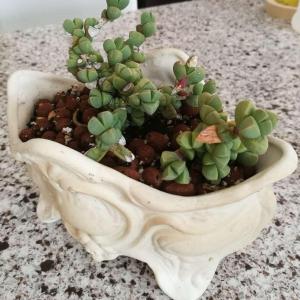

1
0
meriunkat:how much do you water it? if they are hardened and falling then it needs more water..
Ueca:It may be some kind of disease. There is a rigid white coat on some of the stems.
Succulentsister
2017年07月05日
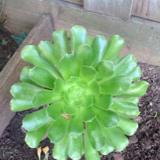
I tried a new growing way in water but when i went away all the roots died 🌵🌱🌳🌲💦🌿


0
0
文章
Dummer. ゛☀
2017年07月01日

The nickname of Stellaria media
Chickweed, also called chickweed flower, jade fu.
The growth habit of chickweed
Love is chickweed warm and moist growing environment, would be more common in temperate regions, suitable growth temperature is between 13 degrees to 23 degrees Celsius, it can still be cold, winter can be mild frost resistance.
The medicinal value of Stellaria media
Stellaria non-toxic, medicinal value is very high, with Qingrejiedu and diuresis.
Don't look like a very inconspicuous chickweed appearance, but it is very useful.
Morphological character
Annual or biennial, 10-30 cm high. Stem pitch or ascending, base much branched, often with pale purple red, was 1 (-2) line of hairs. Leaf blade broadly ovate or ovate, 1.5-2.5 cm long, 1.1-1.5 cm wide, apex acuminate or acute, base attenuate or nearly cordate, entire; basal leaves long stalked, upper leaves often sessile or shortly stalked.
Sparse cymes terminal; pedicels thin, with 1 rows of bristles, elongate after anthesis, pendulous, 7-14 mm long; sepals 5, ovate lanceolate, ca. 4 mm, apex slightly obtuse or suborbicular, margin broadly membranous, outside short glandular hairs; petals white, oblong, shorter than sepals, deep 2 lobed to base, lobes nearly linear; stamens 3-5, shorter than petals; styles 3, linear.
Capsule ovoid, slightly longer than persistent calyx, top 6 lobed, with numerous seeds; seeds ovate to suborbicular, slightly flattened, reddish brown, 1-1.2 mm in diameter, surface hemispherical aneurysm bulges, ridge significantly. 2n=40-42 (44). Florescence is 6-7 months, fruit 7-8 months.



Chickweed, also called chickweed flower, jade fu.
The growth habit of chickweed
Love is chickweed warm and moist growing environment, would be more common in temperate regions, suitable growth temperature is between 13 degrees to 23 degrees Celsius, it can still be cold, winter can be mild frost resistance.
The medicinal value of Stellaria media
Stellaria non-toxic, medicinal value is very high, with Qingrejiedu and diuresis.
Don't look like a very inconspicuous chickweed appearance, but it is very useful.
Morphological character
Annual or biennial, 10-30 cm high. Stem pitch or ascending, base much branched, often with pale purple red, was 1 (-2) line of hairs. Leaf blade broadly ovate or ovate, 1.5-2.5 cm long, 1.1-1.5 cm wide, apex acuminate or acute, base attenuate or nearly cordate, entire; basal leaves long stalked, upper leaves often sessile or shortly stalked.
Sparse cymes terminal; pedicels thin, with 1 rows of bristles, elongate after anthesis, pendulous, 7-14 mm long; sepals 5, ovate lanceolate, ca. 4 mm, apex slightly obtuse or suborbicular, margin broadly membranous, outside short glandular hairs; petals white, oblong, shorter than sepals, deep 2 lobed to base, lobes nearly linear; stamens 3-5, shorter than petals; styles 3, linear.
Capsule ovoid, slightly longer than persistent calyx, top 6 lobed, with numerous seeds; seeds ovate to suborbicular, slightly flattened, reddish brown, 1-1.2 mm in diameter, surface hemispherical aneurysm bulges, ridge significantly. 2n=40-42 (44). Florescence is 6-7 months, fruit 7-8 months.



0
0



